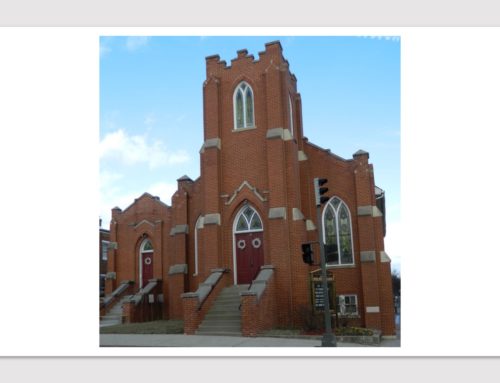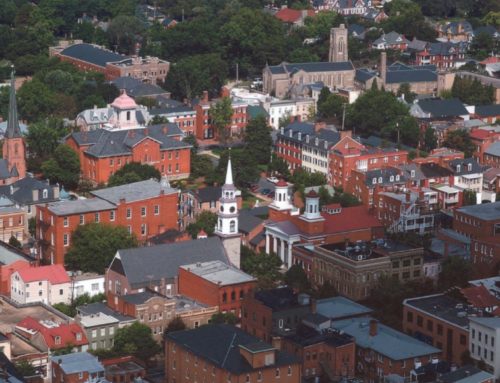Excerpt from the Frederick News-Post:
The iconic red-accented building that marks the entrance to the Frederick Fairgrounds may be the last commercial example of its architectural style in the city of Frederick.
It is also one of 21 buildings or structures within a 22-acre area recommended for a special designation that would add extra requirements related to historic preservation. The Frederick Board of Aldermen will vote Thursday on the proposed historic preservation overlay for part of the Frederick Fairgrounds property at 797 E. Patrick St.
An overlay is a layer of regulations on top of zoning requirements already in place. If approved, the designation would give the city’s Historic Preservation Commission authority to review and approve major exterior changes to the properties.
The proposed designation was introduced by the Historic Preservation Commission based, in part, on the historic significance of the architecture and design of property structures. Significance in design or construction is one of several criteria set by the National Park Service and included in the city code when considering if a property is eligible for a historic designation.
A report submitted by Lisa Mroszczyk Murphy, historic preservation planner for the city, notes that the structures on the fairgrounds provide good examples of fairgrounds buildings from the late 19th and early 20th centuries, ranging from “the vernacular to a rare local example of the Spanish Colonial Revival style.”
The latter refers to the white rectangular hall facing East Patrick Street at the fairgrounds, known currently as the Null Building. Although the building was recently renovated, its “iconic” and “prominent” architectural style is still historically significant, according to Mroszczyk Murphy’s report.
Spanish Colonial Revival architecture became popular after the 1915 San Diego World’s Fair, which featured Spanish-style buildings designed by architect Bertram Goodhue, the report states. In the time between World War I and World War II, historical styles of architecture “provided a sense of nostalgia for a simpler past and exotic influences … were an attempt to provide an escape from everyday life,” the report states.
It was in this context that then-fair board director Lloyd C. Culler built the Frederick building in 1922, according to an article published in The Frederick Post. The building was originally deemed the “Domestic Arts Building,” used to display exhibits made by Frederick County women and merchants, according to the Postarticle.
It later became known as the Household Building and was used as a general exhibit hall, according to the report.
Despite the architectural style’s popularity in the early 20th century, it never caught on fully in Frederick, according to Janet Davis, a Frederick County resident who served for 20 years as the historic preservation planner for Frederick County government.
Of the structures designed in this style within Frederick County, only a few remain, Davis said in a phone interview Monday. She named Casa Loma, a 2½-story Mission-style house in Braddock Heights, as one of the only other examples of this architecture that she could think of in the county.
Christina Martinkosky, one of the city’s historic preservation planners, has observed a handful of other residential properties in this style, but no other commercial properties, she wrote in an email Monday, although she noted that this was not based on extensive research.
“It’s a very unique style,” agreed Bernie Callan, a local resident who has been involved with historic preservation on the city, county and state levels. “It’s a very distinctive building and certainly something worth treasuring.”
Davis also expressed support for the proposed historic designation. It doesn’t necessarily mean exterior changes or even demolition can’t happen, she said. Instead, it ensures that historic resources, including what may be the only example of a specific architectural style in the city, are protected.
“The story of each and every building is unique,” she said. “The review process takes that into consideration.”
She added, “I think it’s well worth doing.”
Other historically significant structures in the proposed overlay include the racetrack, the tunnel, the 1911 and 1929 grandstands, and the beef barn and show ring, according to the staff report.
The Frederick County Agricultural Society, which owns the property, has fought the proposal. Specifically, members have pointed to the financial and redevelopment burdens an overlay would create for daily operations, including the annual Great Frederick Fair, as reasons for their opposition.
Both the city’s historic preservation and planning commissions have recommended the overlay. The aldermen have final authority to approve or deny the designation, regardless of the commissions’ recommendation. They can also modify the boundaries of the overlay.



